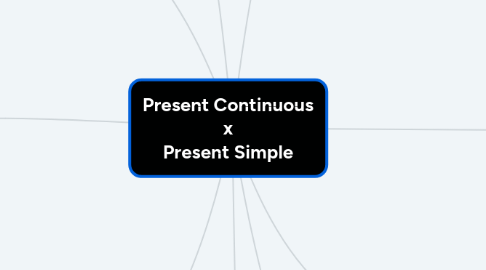Present Continuous x Present Simple
par Andrey Carvalho


1. What is Present Simple?
1.1. The simple present is a verb tense with two main uses. We use the simple present tense when an action is happening right now, or when it happens regularly (or unceasingly, which is why it’s sometimes called present indefinite). Depending on the person, the simple present tense is formed by using the root form or by adding ‑s or ‑es to the end.
1.2. Example: I feel great! Pauline loves pie. I’m sorry to hear that you’re sick.
1.3. The other is to talk about habitual actions or occurrences.
1.4. Pauline practices the piano every day. Ms. Jackson travels during the summer. Hamsters run all night.
2. Common Verbs in the Simple Present Infinitive I, You, We, They He, She, It to ask ask / do not ask asks / does not ask to work work / do not work works / does not work to call call / do not call calls / does not call to use use / do not use uses / does not use to have have / do not have has / does not have
3. How to Ask a Question
3.1. The formula for asking a question in the simple present is do/does + [subject] + [root form of verb]. Do you know how to bake a pie? How much does Pauline love pie?
4. How to Make the Simple Present Negative
4.1. The formula for making a simple present verb negative is do/does + not + [root form of verb]. You can also use the contraction don’t or doesn’t instead of do not or does not. Example: Pauline does not want to share the pie. She doesn’t think there is enough to go around. Her friends do not agree. I don’t want pie anyway. To make the verb to be negative, the formula is [to be] + not. Example: I am not a pie lover, but Pauline sure is. You aren’t ready for such delicious pie.
5. Andrey Guerra
6. What is Present Continuous?
6.1. The present continuous verb tense indicates that an action or condition is happening now, frequently, and may continue into the future.
6.2. The Present Continuous Formula: to be [am, is, are] + verb [present participle]
6.3. Example: Aunt Christine "is warming" up the car while Scott looks for his new leather coat. They "are eating" at Scott’s favorite restaurant today, Polly’s Pancake Diner.
7. The Present Continuous Formula
7.1. To form the present continuous, follow this formula: To Be [Am, Is, Are] + Verb [Present Participle]
8. When to Use the Present Continuous Tense
8.1. Use the present continuous tense with the appropriate “to be” verb and a dynamic verb. A dynamic verb shows action and/or process. For example, Example: Scott’s little sister is arriving at the diner two hours late because her roller-derby team, Chicks Ahoy, won the national championships early today. As she is walking into Polly’s Pancake Diner, she is yelling goodbye to her friends outside, and Scott hopes she doesn’t cause a scene since she is always embarrassing him in public.
9. When Not to Use the Present Continuous Tense
9.1. Do not use the present continuous tense with stative verbs. Stative verbs show a state of being that does not show qualities of change. These verbs can stay in the simple present. For example, INCORRECT: Aunt Christine is preferring the maple walnut pancakes over the banana peanut butter ones that Scott loves. CORRECT: Aunt Christine prefers the maple walnut pancakes over the banana peanut butter ones that Scott loves. Here, the stative verb to prefer shows opinion, and therefore should not be conjugated into the present continuous. Stative verb categories include emotion (to love), possession (to belong), and thoughts (to recognize), and none of these should use the present continuous form.
10. The Exception to the Rule
10.1. Some verbs can be both dynamic and stative! Think about the verbs to be and to think. In its dynamic form, the verb to be can show action:
10.1.1. Example: Sarah, Scott’s little sister, is being bold by ordering the jalapeno-chipotle pancakes.
10.2. But in its stative form, the verb to be is awkward if conjugated in the present continuous.
10.2.1. Incorrect: Sarah is being a tall teenager, who loves her food spicy and her sports dangerous.
10.2.2. Sarah is a tall teenageer, who loves her food spicy and her sports dangerous.
10.3. Here are some more examples:
10.3.1. The waiter thinks Scott should save room for pumpkin pie. (Stative and in the simple present)
10.3.2. The waiter is thinking about getting a new job that requires less human interaction, like a veterinarian. (Dynamic and in the present continuous)
